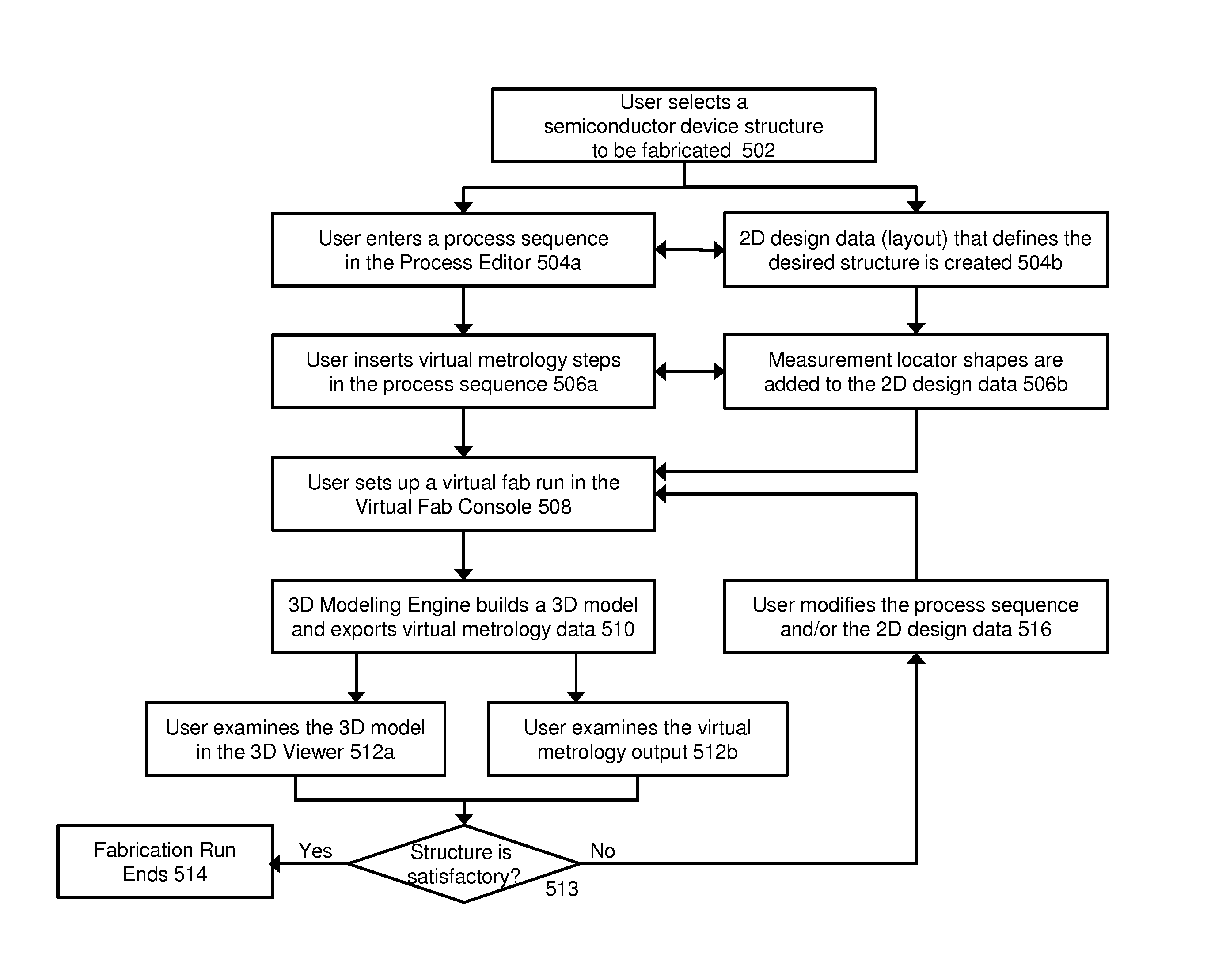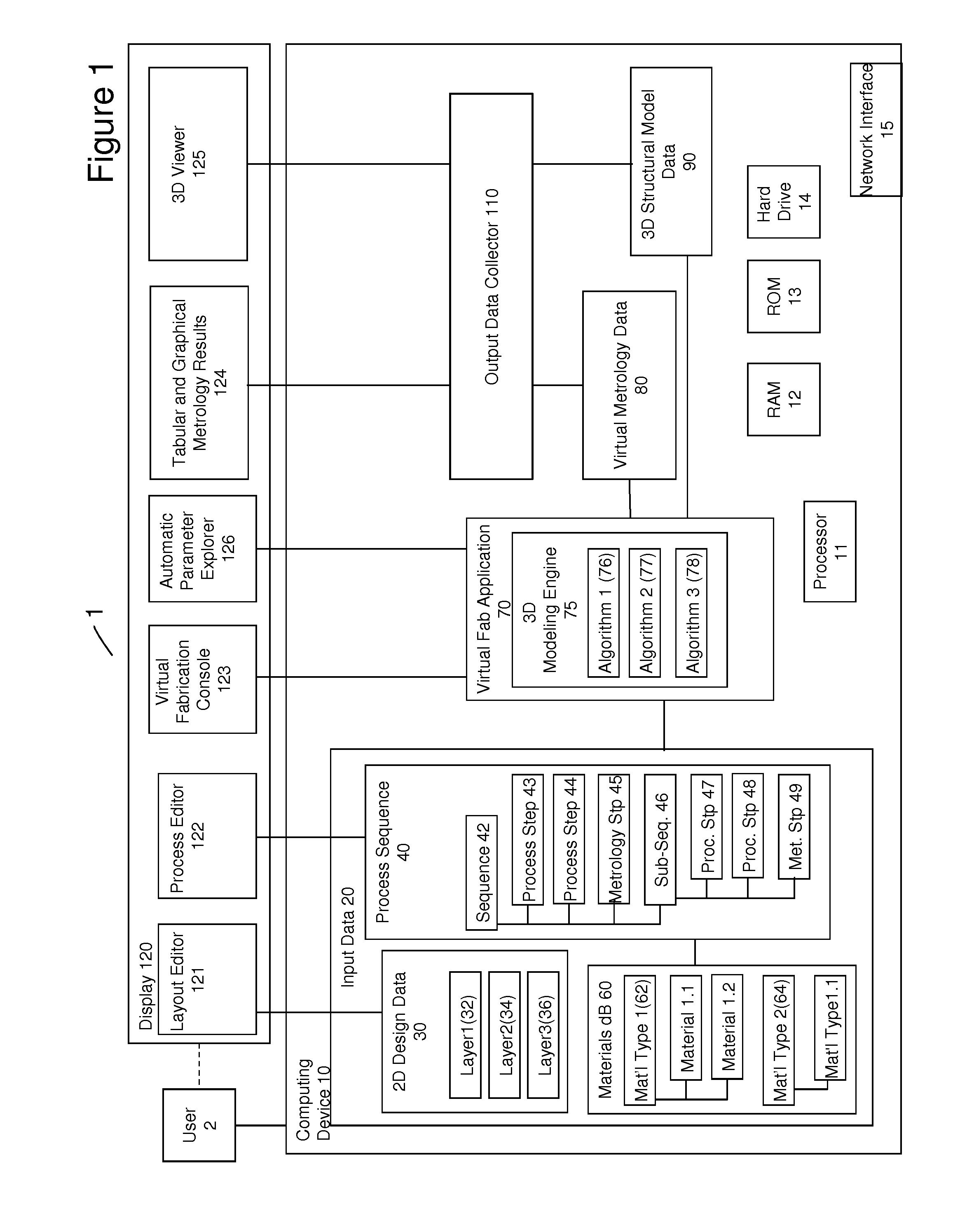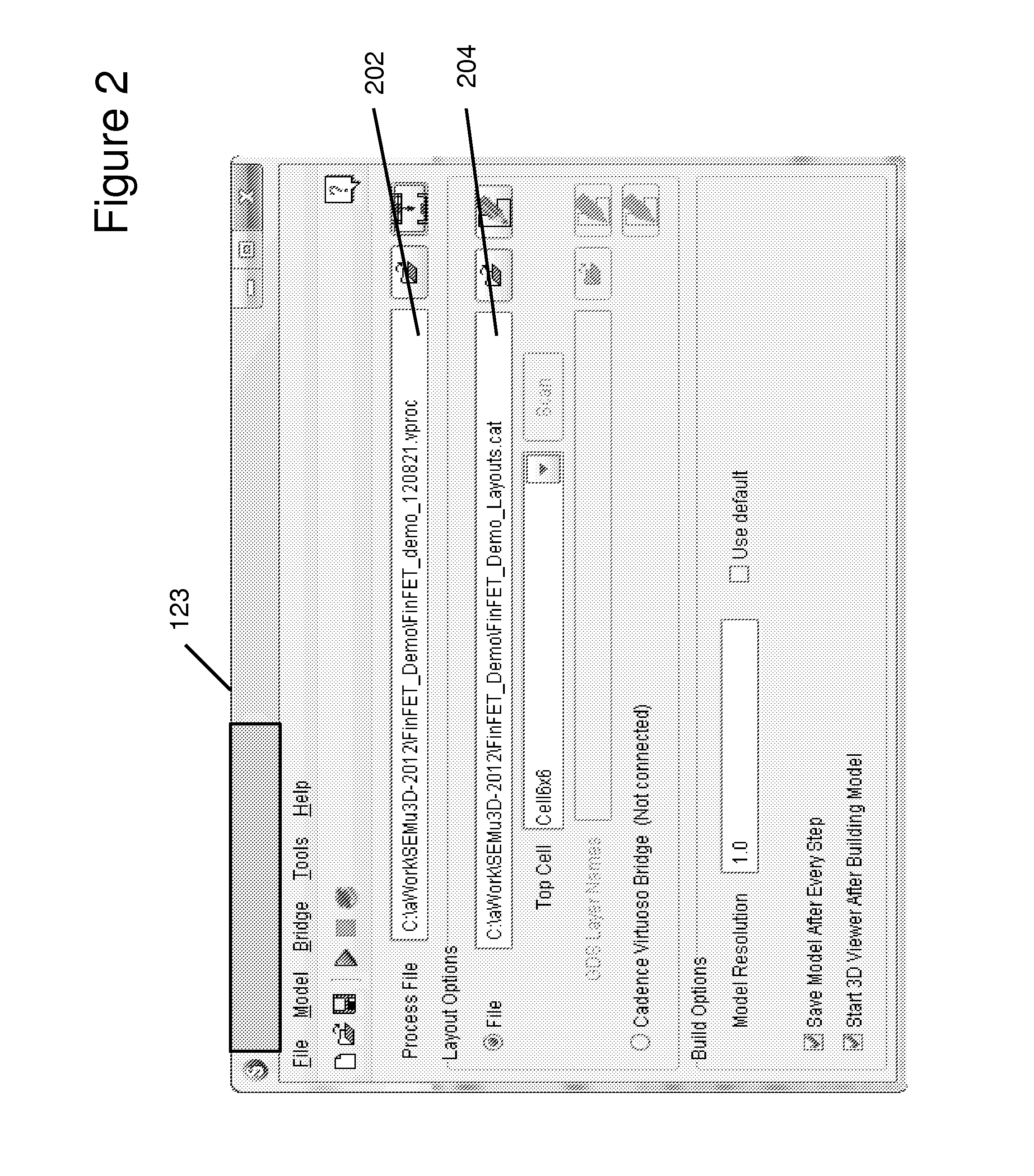Rule checks in 3-D virtual fabrication environment
a virtual fabrication environment and rule checking technology, applied in the field of rule checking in the virtual fabrication environment, can solve the problems of long experimental run duration, negative or null characterization, and high cost, and achieve the effect of reducing the cost of production, and improving the quality of production
- Summary
- Abstract
- Description
- Claims
- Application Information
AI Technical Summary
Benefits of technology
Problems solved by technology
Method used
Image
Examples
Embodiment Construction
[0036]Embodiments of the present invention provide a faster and more economical approach to semiconductor device structure development. By enhancing a virtual fabrication environment to include the use of virtual metrology measurement data, the effect of alterations in a process or process sequence on device structure can be determined, leading to an optimized fabrication sequence. Further, by calibrating the virtual fabrication environment by comparing virtual metrology data generated from a virtual fabrication run with a subset of measurements performed in a physical fabrication environment, the virtual fabrication environment of the present invention becomes increasingly physically predictive when generating model device structures. Additionally, by conducting virtual experiments in the virtual fabrication environment of the present invention, multiple device structure models may be generated using ranges of process parameters and design parameter variations to cover an entire pr...
PUM
 Login to View More
Login to View More Abstract
Description
Claims
Application Information
 Login to View More
Login to View More - R&D
- Intellectual Property
- Life Sciences
- Materials
- Tech Scout
- Unparalleled Data Quality
- Higher Quality Content
- 60% Fewer Hallucinations
Browse by: Latest US Patents, China's latest patents, Technical Efficacy Thesaurus, Application Domain, Technology Topic, Popular Technical Reports.
© 2025 PatSnap. All rights reserved.Legal|Privacy policy|Modern Slavery Act Transparency Statement|Sitemap|About US| Contact US: help@patsnap.com



